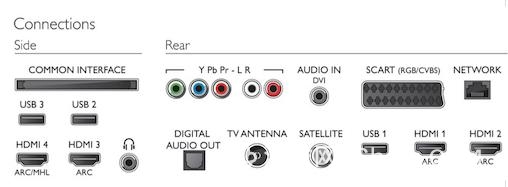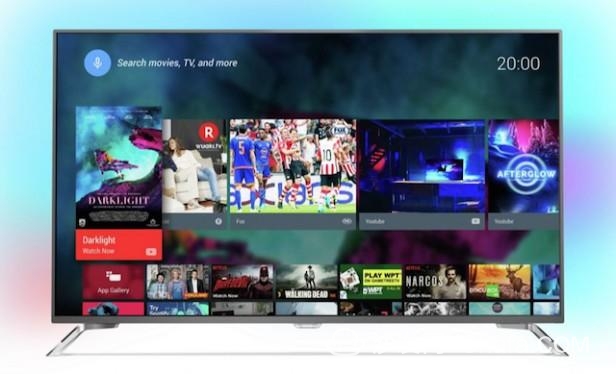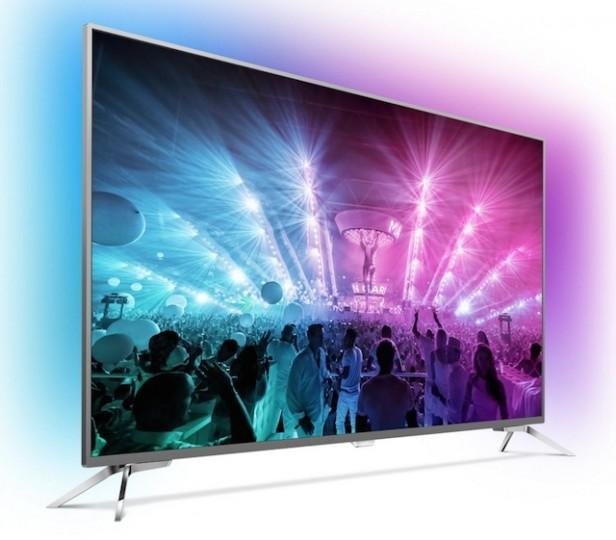T Copper Tube Terminals,Non-Insulated Pin-Shaped Naked Terminal,Copper Cable Lugs Terminals,Insulated Fork Cable Spade Terminal Taixing Longyi Terminals Co.,Ltd. , https://www.longyicopperlugs.com
The 55PUS7101 is a 55-inch TV from Philips with native 4K resolution. In the next few weeks, the company will push firmware updates to enable the product to play high dynamic range images, and its smart features come from Google's Android TV platform. In addition, the product provides a bold three-sided version of Ambilight system design, the price of 1,200 pounds (about 11,187 yuan) also seems to make people feel that its cost is high. However, some internal problems have forced people to think twice.
Design and function
The 55PUS7101 won the 2016 iF Design Award, which can be seen through its appearance. The slim silver border is very attractive, and the smooth lining feet are evenly distributed under both sides of the screen. The overall design gives a light feeling, as if the airframe is suspended in midair.
In the trilateral version of Ambilight technology, the scene in the picture vividly jumped into the eyes of users. The so-called Ambilight technology, refers to the LED light source arranged in the rear edge of the TV, and then make the color and the picture being played exactly. Of course, users can make fine adjustments according to their preferences. 
For the interface, the 55PUS7101 provides four HDMI ports and three USB ports, and can be connected to the network through wired and wireless connections. However, it is worth pointing out that although two of the HDMI ports reportedly support the HDCP 2.2 4K anti-piracy system, the testers could not successfully play after connecting the Panasonic UB900 or the Samsung K8500 Ultra High Definition Blu-ray player. When connected to the Samsung K8500, nothing appears on the TV. The connection Panasonic UB900 can only output high-definition picture. It seems that these problems will be solved in the upcoming firmware update.
At present, this product does not support HDR, which also needs to be resolved in the next firmware update. However, other major products launched in 2016 have already had the ability to support HDR.
Frankly speaking, it is also commonplace for firmware to be updated for today's various electronic products. However, the crux of the problem lies in the fact that Philips not only needs to use this method to add various key functions, but it is often late and people cannot help but have some doubts.
Of course, the actual playback effect of the 55PUS7101 can still bring a certain degree of confidence to consumers. Taking into account that the product built a variety of intelligent functions around Android TV, and the smart platform integrates mass applications, to meet the needs of most users absolutely no problem. 
With the support of wide color gamut panels and HDR "upgrade" systems, the content of those standard dynamic ranges will also be presented with better picture quality. The 55PUS7101 uses the Pixel Precise Ultra HD system as its graphics engine, which is positioned in the middle of the Philips product line. With the help of a quad-core processor, various systems including Android TV can run smoothly.
Quality 
The first thing to point out is that the 55PUS7101 uses an IPS-type LCD panel. Readers familiar with such panels must be aware that their features are slightly wider than the VA LCD panel at the best viewing angle, but have less horizontal response and contrast in the black. This may cause great problems when viewing HDR content, but testers are not currently able to measure this.
Observations in Philips' own color and brightness processing system will reveal that the screen performs quite poorly in response to horizontal black levels. Considering that the product adopts an IPS panel, the lighting system adopts an edge type and no local dimming function, resulting in a dark-colored scene with a gray mark with a very poor contrast, which is not convincing in terms of details or depth of field. Under the influence of the above-mentioned gray mark, any rendering effect involving dark objects or scenes has been significantly impacted, and dynamic performance is also very low.
When a bright scene is displayed, the entire screen looks very sluggish, the viewing experience is poor, and it is even more difficult to obtain immersion. 
In addition to the contrast problem, the backlighting of the 55PUS7101 is even worse. In some areas, the brightness is significantly higher than in other areas, and the color performance is also inconsistent. When some areas of the picture are slightly yellow, other areas are slightly blue.
When you need to pay attention, the above problem is still only caused when non-native HDR content is played. When playing real HDR content, users may only experience more serious problems in a wider range of brightness. In fact, any TV that uses edge LED lighting may not be able to render HDR content well.
The 55PUS7101 brings mixed results when presented in ultra-high resolution. In the case of still pictures, the perception is clear and neat, and when the moving picture is displayed, the edges of the subject appear obvious blurring. However, with the help of the Philips Perfect Natural Motion system, the blurring and jitter phenomena described above are significantly reduced. But instead, such objects have the undesirable effect of a slight flickering halo.
In terms of color, the 55PUS7101 can present vivid and rich effects, at least in bright scenes. In areas with good lighting conditions or where the Ambilight system is activated, the grey markings in the dark scene mentioned above will be significantly reduced. Of course, this is an eclectic solution that does not change the essence of the problem.
Sound quality
The shape of the 55PUS7101 is relatively slim, but this does not hinder its good sound quality, which is closely related to the subwoofer on the back of the fuselage. When the volume of the product is adjusted to be very large for most people, the frequency performance is not ambiguous and the vocals are always clear and full. Considering that its speakers do not use a front-end design, this TV can present a fairly wide sound field. Treble occasionally harsh phenomenon. The sound field generated from the back of the fuselage also slightly gives a feeling of being unable to display. Compared with some televisions, its low-frequency performance also reflects the limitations to some extent. 
Overall, compared to its picture quality, the 55PUS7101's sound quality performed a lot better.
something else
The remote control of the 55PUS7101 provides an intimate QWERTY keyboard on the back for users to enter text, and the layout of the buttons on the other side is also consistent with people's usual usage habits.
For gamers, input delay performance has always been the focus. After adjusting using the TV's game settings, this indicator is only 33ms, which is very good for the 4K TV standard.
Philips 55PUS7101 TV users can refer to the tutorial: Philips Smart TV Universal Tutorial Installation Method Install the sofa butler to extend third-party applications. 
in conclusion
The 55PUS7101's performance in contrast is disappointing. More specifically, it performed very poorly when presented with dark images and could not meet the standards of modern television products, especially in today's era of HDR functionality. Although this product inherits Philips's tradition of design and Ambilight functionality, it also requires careful thinking for users who focus on quality rather than appearance.
Foreign media rating Philips million 55-inch TV: The picture quality is very bad
The 55PUS7101 uses a native ultra-high-definition LCD panel with edge-mounted LED lighting that does not have local dimming capabilities. Manufacturers use something called Micro Dimming Pro. With the TV's processing engine, the picture is decomposed into thousands of different areas in order to present the user with more precise results. In addition, with the help of the light source sensor, it can better optimize the picture output effect according to indoor lighting conditions.